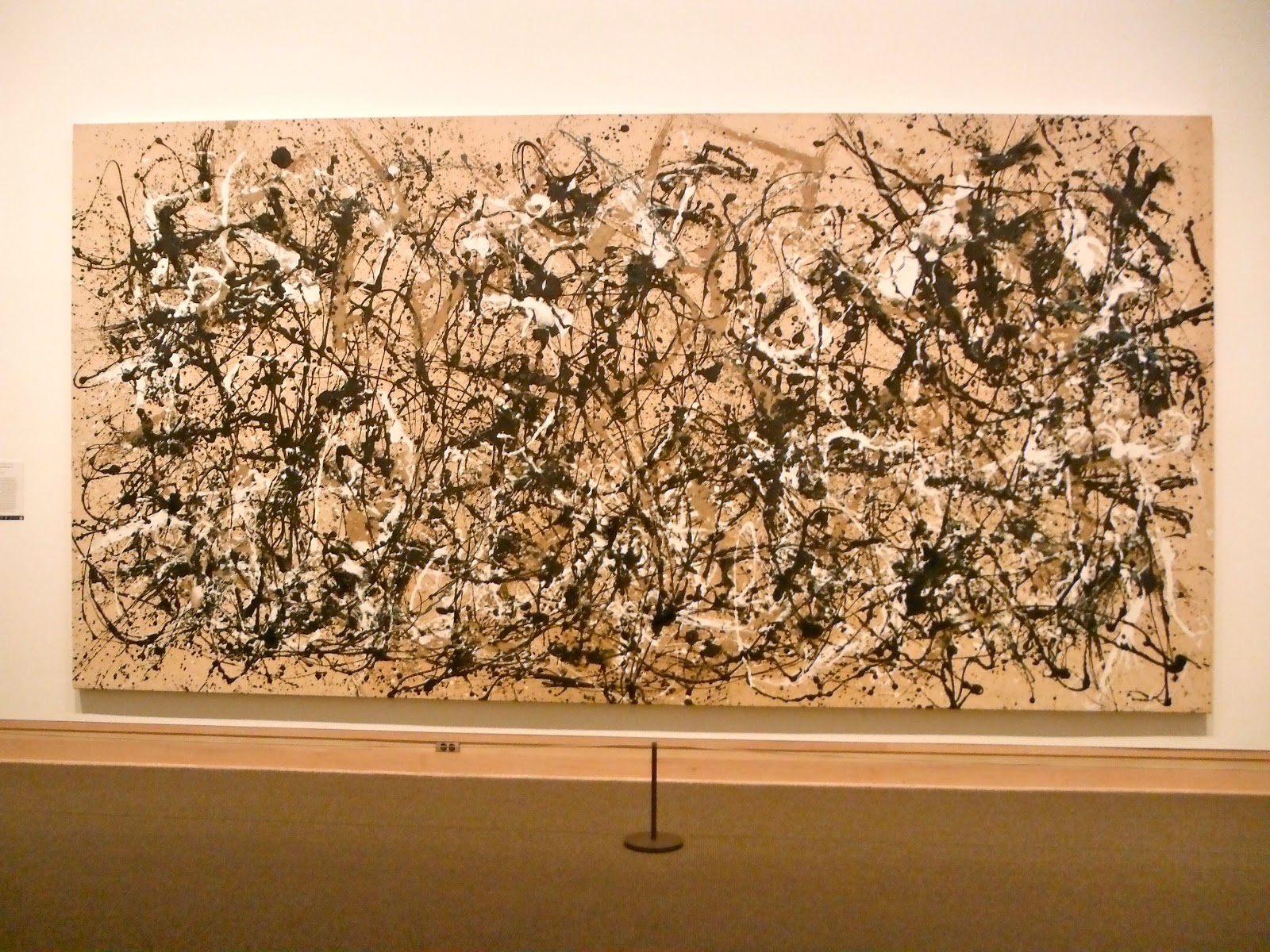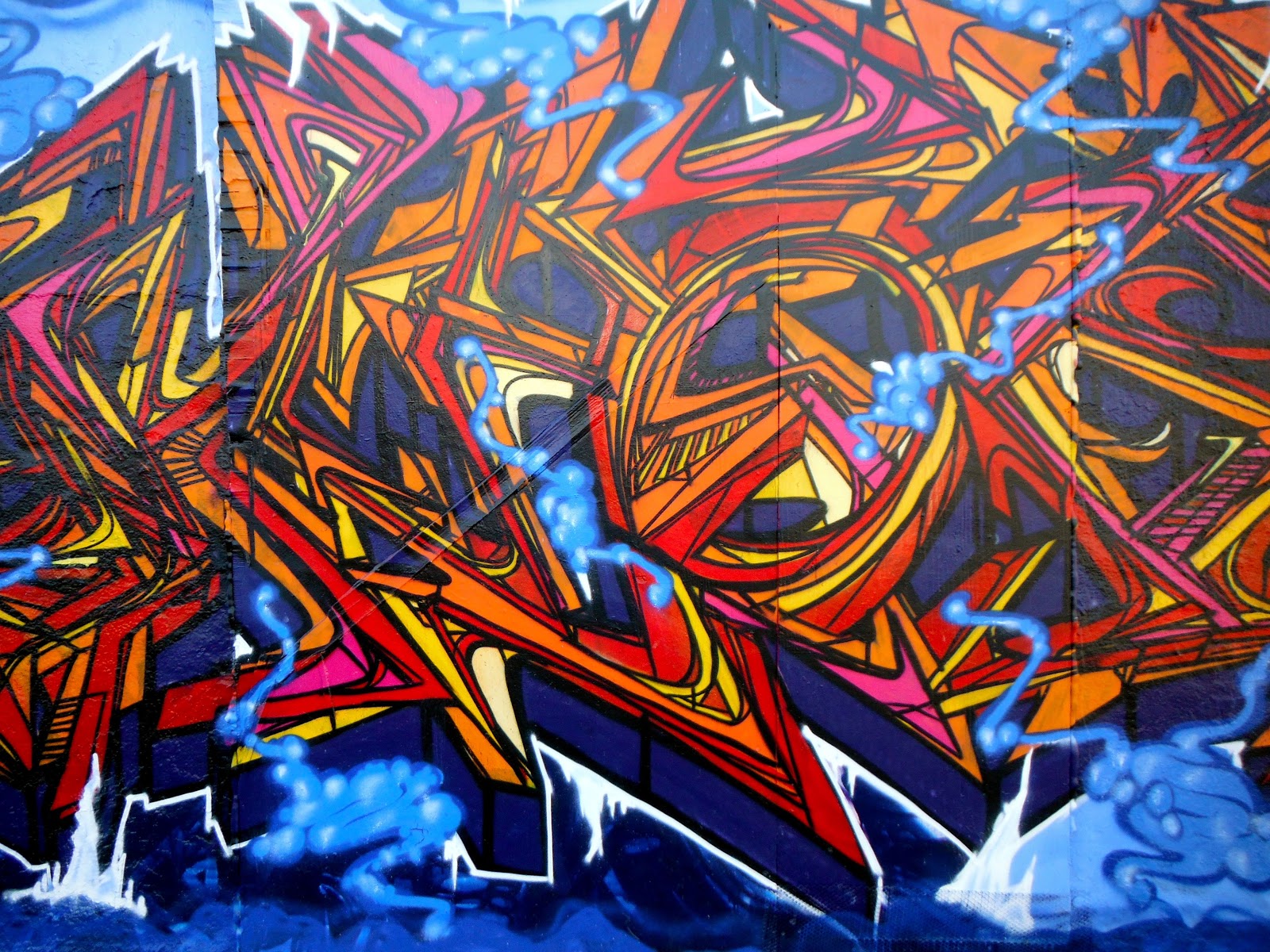This is my drawing for my recent "Figurative Expressionist" assignment. It is a quick underpainting of acrylic paint with chalk pastels on top. We were talking a lot about what "expressionist" means in a drawing - the handling of the materials? Or the concept of the drawing itself. I personally think it can be a little of both. I might describe someones drawing as "expressive" based on the way they have handled whatever material they used, but I could also describe someones drawing as "expressive" by the 'narrative' displayed. In this drawing I tried to work with both of these. I left the dress and areas of the background just a gesture (underwork of acrylic paint). I also went with kind of a weird set-up for the narrative part of the piece.
Thursday, March 28, 2013
Monday, March 18, 2013
Chuck Close
There were so many things I saw in the Metropolitan Museum of Art that amazed me. It was incredible getting to see artwork that you've only seen in books or online. I can't even begin to describe just HOW different it is. One artist I want to talk about in particular is Chuck Close.
I've seen his gridded abstract portraits before, but that can't even compare to seeing it in person. The COLOR alone was...I have no words to justify it. Here are some pictures I took of both that piece and the other photorealistic portrait hanging on the opposite wall:
Chuck Close was born in 1940 and still lives in New York today. His works vary in medium, but his primary focus is portraiture. I found it interesting that he suffers from Prosopagnosia, which is the inability to recognize faces. Close is quoted as saying on the subject, "I was not conscious of making a decision to paint portraits because I have difficulty recognizing faces. That occurred to me twenty years after the fact when I looked at why I was still painting portraits, why that still had urgency for me. I began to realize that it has sustained me for so long because I have difficulty in recognizing faces."
Later on in his career he chose to begin to "limit" himself, and therefore, explore his creativity by throwing away his paintbrushes.
"I chose to do things I had no facility with. The choice not to do something is in a funny way more positive than the choice to do something. If you impose a limit to not do something you've done before, it will push you to where you've never gone before."
In 1988 Close suffered from a spinal artery collapse which left him paralyzed from the neck down. Through months and months of physical therapy, he has been able to regain slight use of his muscles, but he still relies on a wheelchair. However, he continues to paint by literally taping a paintbrush to his wrist. His works are more-so abstract now, but still incredible. Over everything, this is such an inspiring story - he has never gave up on his artwork.
Jenny Saville
Jenny Saville is a contemporary British painter. I somewhat recently read an interview with her for my Advanced Figure Drawing class and decided to blog about her because I find her work very inspiring.
She deals a lot with the female nude. I first learned about her in Foundations Drawing II with looking at her drawings of the large women from the focal point of looking up from below. Those are monumental, but I fell in love with the images that Jim showed us in Figure Drawing. They are sketches of figures that are reworked over and over (pentimenti), so that there are ghosts of images showing and certain areas worked more than others.
In my drawings for this past period in that class (Figurative Expressionist), I've been trying to think more of how I handle my drawing and building up certain places more than others. This is something I've struggled with because I tend to want to work the whole composition evenly.
Anyway, I was just reading through the interview with her and found a lot of her quotes to be very inspirational. Here are a few in particular:
"Painting is my natural language. I feel in my own universe when I'm painting."
"I'm not anti conceptual art. I don't think painting must be revived, exactly. Art reflects life, and our lives are full of algorithms, so a lot of people are going to want to make art that's like an algorithm. But my language is painting, and painting is the opposite of that. There's something primal about it. It's innate, the need to make marks. That's why, when you're a child, you scribble."
"When I was about 11, he [her uncle] gave me a section of hedge, and told me to observe it for a whole year. So I did, and I learnt such a lot about how nature shifts, and the necessity to really look."
"In these pieces, I'm trying to get simultaneous realities to exist in the same image," she says. "The contradiction of a drawing on top of a drawing replicates the slippage we have between the real world and the screen world. But it's about the memory of pictures, too. I'm directly referencing other artists: Manet, Titian, Picasso, Giorgione."
Here are some pictures of her work:
Here is the interview.
Wednesday, March 6, 2013
Ivy
This is a piece I did inspired by Kay Grubola's artwork. The first image is a work in progress and the second is the "finished" product (I could still do more to it, but I haven't decided yet).
I used fabric that I had - referencing earth tones (dawn till dusk). I sewed these down with a sewing machine and then hand sewed on the ivy pieces. I was going to cut off the extra string, but when I laid it out on the table it was sort of spread out in all directions, so I decided to hand sew it down how it was.
"There is something infinitely healing in the repeated refrains of nature - the assurance that dawn comes after night, and spring after winter." - Rachel Carson
Subscribe to:
Comments (Atom)









































